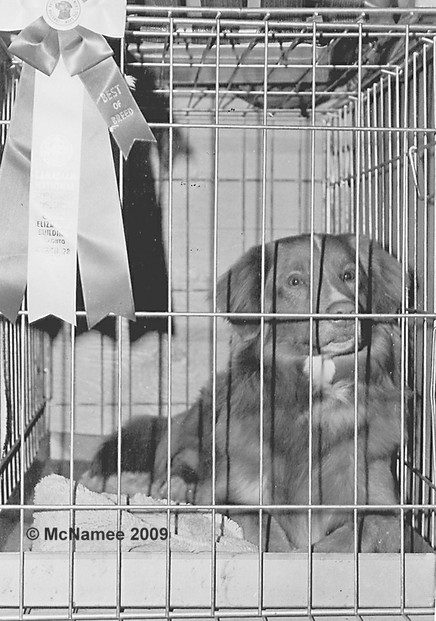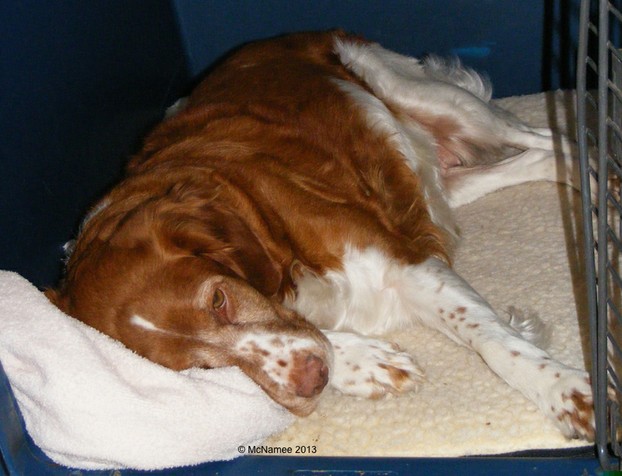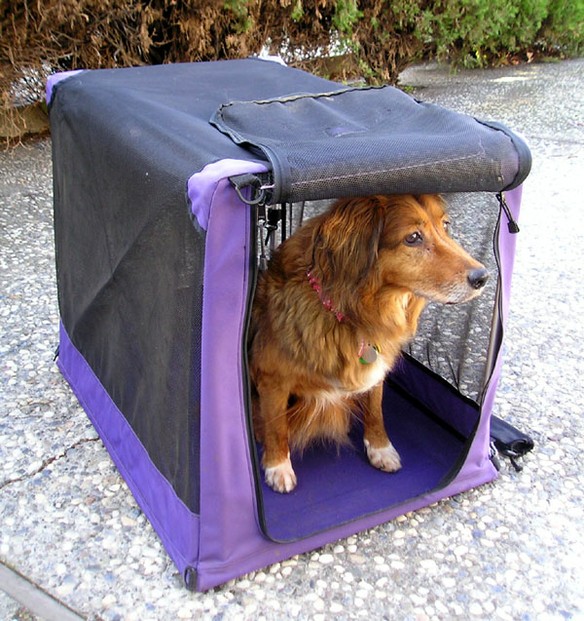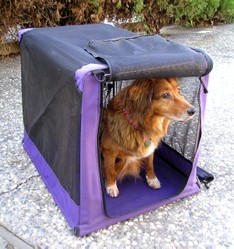When using a crate to help housebreak a dog, use a small crate as described above so the dog will ask to be let out rather than soiling its bed. If the crate is too big, the dog will just use one end as a bathroom, negating the whole idea of using the crate as a housebreaking tool. However, once the dog is reliably housebroken, he can use a bigger crate.
A house crate need not be as sturdy as a crate used for travelling. Once the dog is housebroken, he should have a crate that is big enough for him to stand in easily and for him to lie on his side with his legs stretched out comfortably. My house dog crates are a size larger than what I use for travel.
A house crate can be wire, metal, wood or plastic. Many plastic crates have the advantage of coming in designer colours, and they have removable doors so the dog can use the crate as a refuge when he wants some peace and quiet. You can always put the door back on if needed.
Plastic crates are also easy to keep clean, especially if the floors are smooth and flat instead of indented for stacking on other crates. Some dogs prefer the openness of a wire crate, while others want the privacy of a plastic one. Plastic crates have the advantage of keeping drafts off the dog at floor level, and they don't need a tray or floor inside.
Most dogs generally like crates when properly introduced to them, since they simulate the confined quarters of a den. A dog bed or blanket put inside the crate transforms it into a cozy home.
If you have children, make a rule that the dog cannot be played with or disturbed when in his crate, because that is his special place where he can go when he wants some quiet time.










 Versatile Nova Scotia Duck Tolling Retrieverson 08/02/2014
Versatile Nova Scotia Duck Tolling Retrieverson 08/02/2014
 Should You Spay or Neuter Your Puppy?on 08/12/2014
Should You Spay or Neuter Your Puppy?on 08/12/2014
 Horse Racing History: the Preakness Stakeson 05/15/2014
Horse Racing History: the Preakness Stakeson 05/15/2014
 Dinosaurs Will Be On Display in Trenton, Ontario, Canadaon 07/29/2013
Dinosaurs Will Be On Display in Trenton, Ontario, Canadaon 07/29/2013



Comments